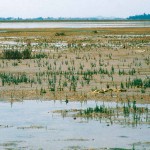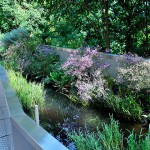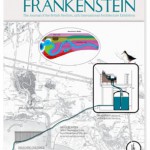We are here Venice has been facilitating connections between curators, production teams and Venice as a real city. So far, we have been engaged by representative of a few different countries and institutions that will be exhibiting later this year.
We are increasingly called upon to advise curators who are invited to participate in the Biennale when they wish to build some form of direct relevance into their Venice activities.
This can be a very creative dimension of what we do, and we are constantly thinking of ways to ensure that these transient actions could have some kind of permanent legacy, or, contribute positively to our goals for Venice. When possible, we connect other local groups to our Biennale contacts so their endeavours have a more global reach.
Further details to come on our links to the pavilions of the USA, France, Great Britain and Antigua-Barbuda, some other installations in other parts of the Architecture exhibition, and parallel Venice-based initiatives.
Biscuits courtesy of Mattia Berto, inventor of Teatro in Bottega.
2014 Swiss Pavilion at the XIV Venice Architecture Biennale
Jane da Mosto for WahV was one of the interpreters for the Tino Sehgal and Asad Raza intervention to bring the archives of Cedric Price and Lucius Burkhardt to life.
Close and extended contact with these powerful thinkers yielded ideas for WahV’s ongoing work in Venice and approach to introducing changes, some of which was shared with visiting study groups. Best of all was the day spent with Samantha Hardingham and Unit 7 (The Department of Not Usually Valued Knowledge) from the Architectural Association who were looking for parallels to their study of Wallasea Island, Essex (UK).
archithese article in pdf format
http://pr2015.aaschool.ac.uk/DIP-07
2010 British Pavilion at the XII Venice Architecture Biennale – Villa Frankestein
The seeds that grew into WahV were planted in 2010 during the collaboration with muf art/architecture for the XII Architecture Biennale. What began as a techno-scientific brief to develop a system for portraying the characteristics of the salt marsh and a commitment to facilitating an “afterlife” for the tank and salt marsh ecosystem, somewhere in the city, turned into a process of discovery about all the different organisations and communities that constitute the fabric of Venice and guarantee its continued existence.
Life in the Lagoon – a General Outline
Amidst the splendour and magic, it is difficult to remember that Venice was founded in adversity, on tiny islands amidst swamps, out of reach of the marauding barbarians from northern Europe. These early settlers were able to contrive extraordinary advantages from this unlikely setting making the Venetian Republic one of the most astounding achievements in government, empire and indeed culture. Read more »
The Thin Borderline
All human works, when not linked to the identity of their location and place, risk producing monsters.
If this is the principal meaning of Villa Frankenstein, a supplementary message, also explicit in Ruskin’s notes, should guide this experience: the attention to details, to ‘close looking’, is fundamental – even ‘strategic’ – for the conception and understanding of a place.
The Saltmarsh Tank
The ‘Saltmarsh Tank’ presents a paradigm of the problems of fragmentation and of the loss of functionality: extrapolated from its context and rebuilt on a small scale, it can exist only in the presence of certain conditions, carefully planned and continually managed.
The Lagoon Debate – a Writeup
An Investigation into what emerges from multifaceted participation with a common theme.
British Pavilion, Festa della Salute, 21/11/2010
Villa Frankenstein Volume #2
Volume #2 – LA LAGUNA DI VENEZIA takes a closer look at the Venice lagoon and the issues surrounding it including step by steps instructions on how to build a salt marsh.
The Venice in Peril Fund – The British Committee for the Preservation of Venice
Venice in Peril finances restoration projects as well as research into the underlying problems of Venice, such as flooding and managing tourism. We lobby for a long-term approach to protecting the city, both as a monument and a living community.



